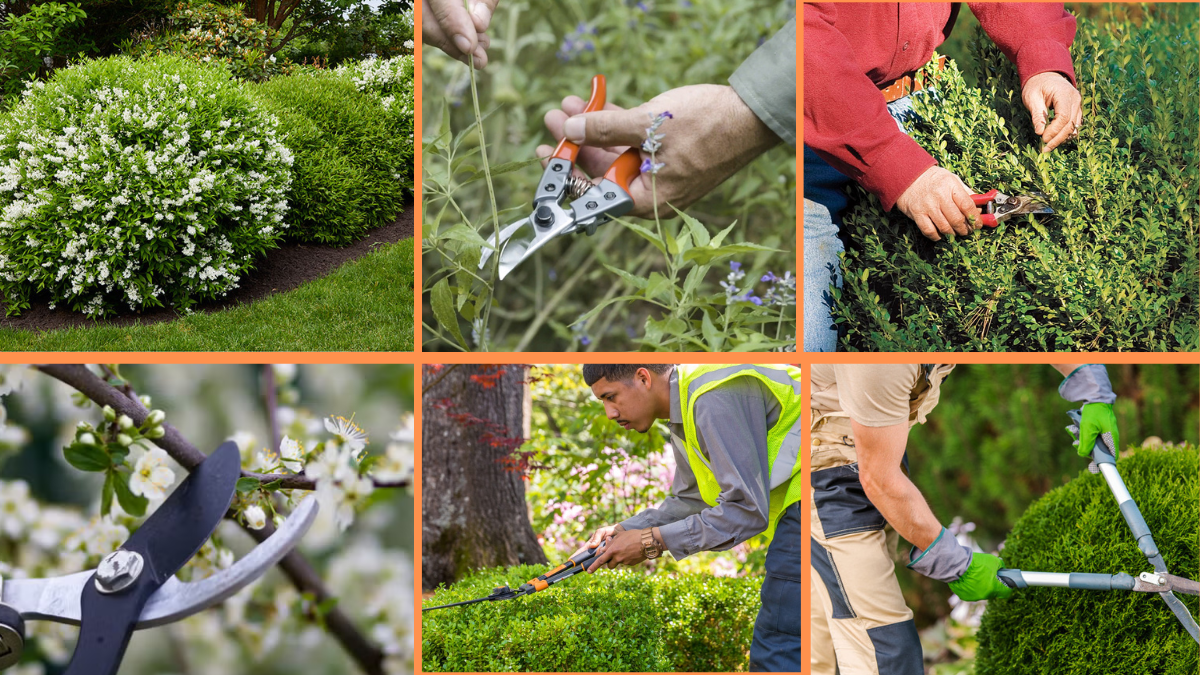Flowering shrubs are the backbone of a stunning garden. From hydrangeas and lilacs to roses and azaleas, these plants fill outdoor spaces with color, fragrance, and natural beauty. But to keep them thriving and blooming year after year, proper pruning is essential.
Many gardeners feel unsure about when and how to prune their shrubs, often fearing they’ll accidentally damage the plant or cut away next season’s flowers. The good news? With a little knowledge and the right approach, pruning can be simple and incredibly rewarding. In this guide, we’ll share 10 expert tips to help you confidently prune your flowering shrubs so they stay healthy, attractive, and filled with vibrant blooms.

1. Know Your Shrub’s Blooming Schedule
Before you even pick up the pruning shears, it’s important to understand when your flowering shrub blooms — because this determines the best time to prune it.
- Spring-blooming shrubs (like lilacs, forsythia, and azaleas) set their flower buds on old wood — the previous year’s growth. Pruning them in late summer or fall could remove next year’s flowers.
Best time to prune: Just after they finish blooming in spring. - Summer or fall-blooming shrubs (like butterfly bush, rose of Sharon, and some hydrangeas) bloom on new wood — growth from the current season.
Best time to prune: Late winter or early spring before new growth starts.
Pro Tip: If you’re not sure when your shrub blooms, observe it for a season before making major pruning cuts.
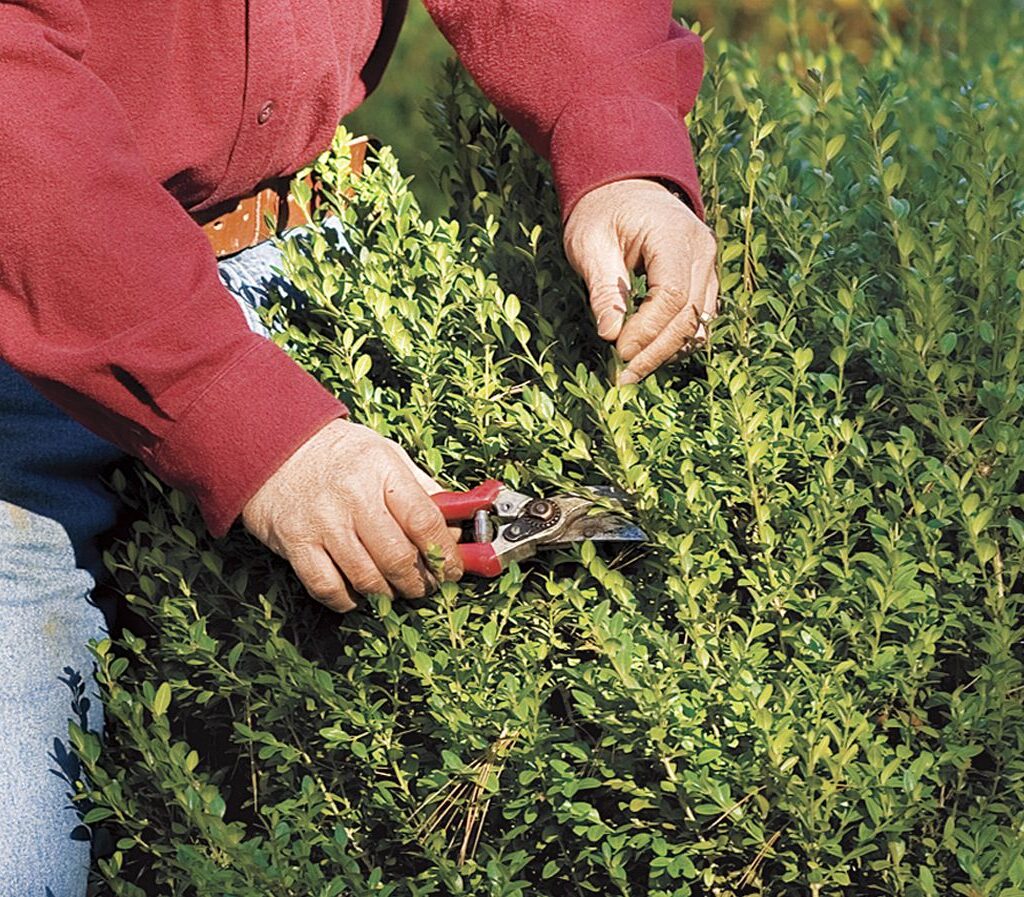
2. Use the Right Tools
Clean, sharp tools make pruning faster, safer, and better for your plants. Dull blades crush stems and leave ragged wounds, increasing the risk of disease.
Must-have pruning tools:
- Bypass pruners for small branches (up to ¾ inch)
- Loppers for thicker stems (up to 2 inches)
- Pruning saw for large, woody branches
Tip: Disinfect your tools before and after use with rubbing alcohol or a 10% bleach solution to prevent spreading plant diseases.
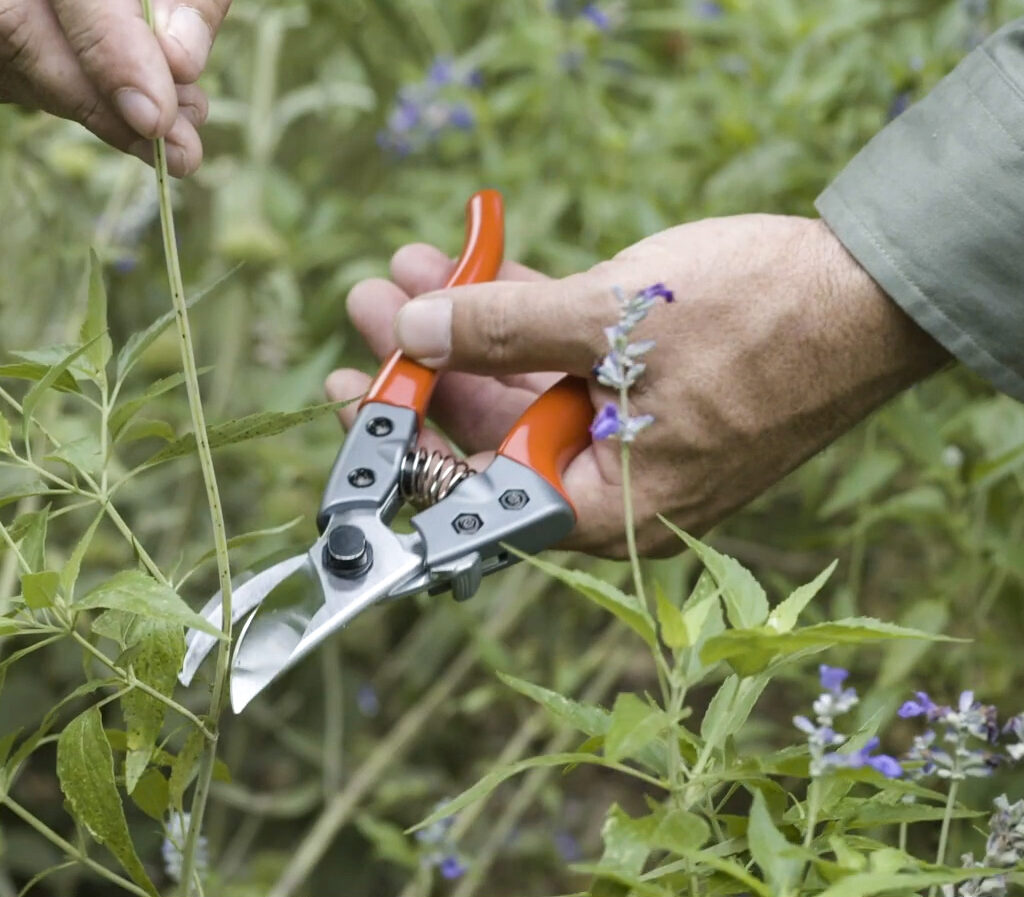
3. Remove Dead, Damaged, or Diseased Wood First
This is the first and most crucial step in any pruning job. Dead, broken, or diseased branches not only look untidy but can also harbor pests and pathogens.
How to identify:
- Dead wood: brittle, no green under the bark when scratched.
- Diseased wood: discolored, spotted, or moldy.
- Damaged branches: cracked or split from storms or accidents.
Tip: Cut back to healthy wood, just above a bud or branch junction.
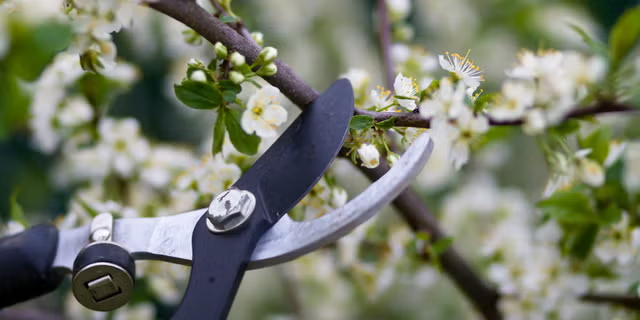
4. Thin Out Crowded Growth
Over time, flowering shrubs can become dense and tangled, reducing air circulation and blocking sunlight to inner branches. This can lead to fewer flowers and an increased risk of fungal diseases.
What to do:
- Remove some of the oldest, thickest stems at ground level.
- Cut out crossing or inward-growing branches.
Pro Tip: Aim to keep the shrub’s center open and airy, like a vase shape, for better light and air penetration.
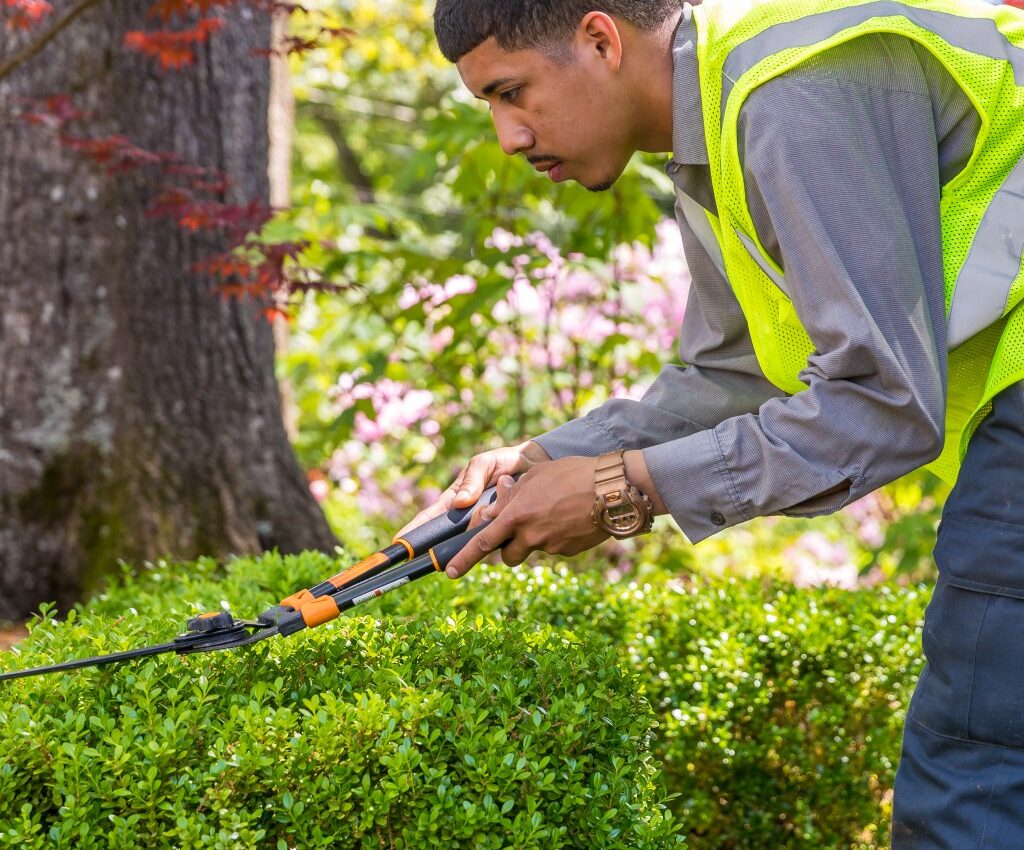
5. Shape the Shrub Naturally
When pruning, avoid harsh, artificial shapes unless you’re specifically creating a hedge or topiary. Most flowering shrubs look best with a soft, natural form.
How to achieve it:
- Step back often to check the overall shape.
- Cut branches at different lengths for a layered, organic look.
- Follow the plant’s natural growth pattern.
Tip: Never remove more than one-third of a shrub’s total growth in a single season.

6. Use the Right Cutting Technique
A clean, angled cut promotes quick healing and directs water away from the cut surface, reducing the risk of rot.
Best practice:
- Cut about ¼ inch above a healthy outward-facing bud.
- Make the cut at a 45-degree angle, sloping away from the bud.
Tip: Don’t leave long stubs — they can die back and invite disease.
7. Encourage More Blooms with Selective Pruning
For many flowering shrubs, removing spent blooms (called deadheading) encourages the plant to produce more flowers.
How to do it:
- Snip off faded flowers just above the first set of healthy leaves.
- For shrubs like roses and hydrangeas, deadheading extends the blooming season.
Pro Tip: Regular deadheading can also help tidy up the appearance of your garden.
8. Rejuvenate Old, Overgrown Shrubs
If you have a neglected, overgrown shrub with poor flowering and dense, woody stems, it might need rejuvenation pruning.
Options:
- Gradual rejuvenation: Remove one-third of the oldest stems at ground level over three years.
- Hard pruning: Cut the entire shrub down to 6-12 inches above the ground in late winter for a fresh start.
(Only do this for shrubs known to respond well, like spirea and butterfly bush.)
Tip: Always research your specific plant before attempting drastic pruning.
9. Prune at the Right Time of Day and Season
For the best results, avoid pruning during extreme temperatures or wet conditions.
Ideal conditions:
- On a dry, mild day to reduce the spread of fungal diseases.
- During the plant’s dormant period (late winter/early spring) for summer-blooming shrubs.
- Immediately after flowering for spring bloomers.
Pro Tip: Avoid pruning during heatwaves or droughts — stressed plants recover more slowly from pruning wounds.
10. Don’t Be Afraid to Prune!
Many gardeners hesitate to prune their flowering shrubs for fear of harming them. In reality, most shrubs are resilient and benefit from regular pruning.
Benefits of pruning:
- Stimulates fresh, healthy growth.
- Improves flower production.
- Enhances overall shape and appearance.
- Prevents overcrowding and disease.
Pro Tip: Start small if you’re nervous. Even light shaping and removing dead branches can significantly improve a shrub’s health and beauty.
Final Thoughts
Pruning your flowering shrubs doesn’t have to be intimidating. With these 10 practical tips, you can confidently maintain lush, healthy, and flower-filled shrubs in your garden.
Remember to:
- Understand your plant’s bloom cycle.
- Use the right tools.
- Prioritize health by removing dead and diseased wood.
- Thin crowded growth.
- Shape naturally.
- Encourage reblooming with deadheading.
- Rejuvenate old shrubs thoughtfully.
- Prune during optimal conditions.
- Trust your instincts and enjoy the process.
By giving your shrubs the care and attention they need through proper pruning, you’ll be rewarded with more blooms, healthier plants, and a more beautiful, thriving garden.
